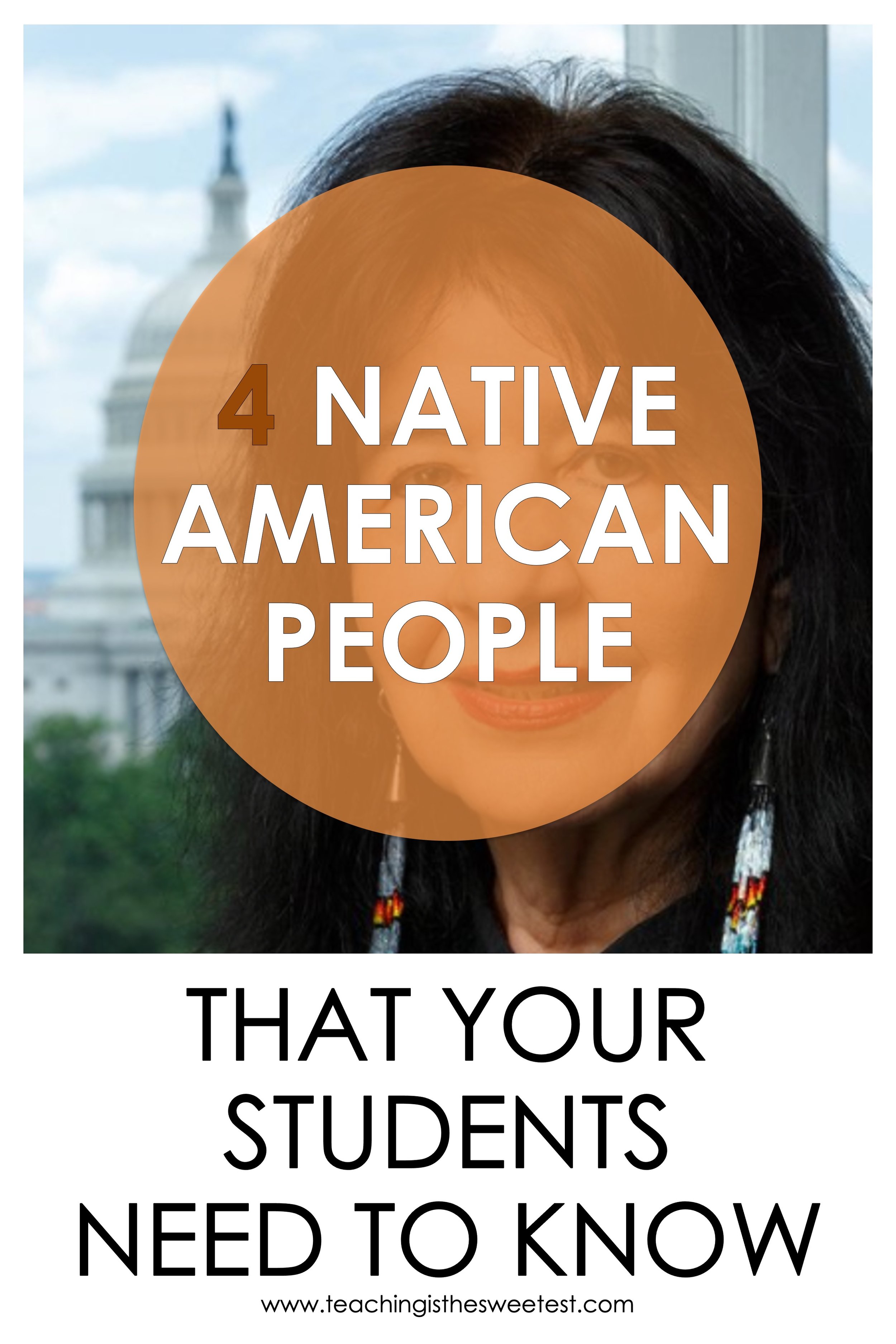4 Native American People Your Students Need to Know
Native American Heritage Month is a reminder to include and celebrate Native American people (of both the past AND the present) all year long. Students need to know that Native American history is rich, but they should also recognize that Native American history is also still being written today.
Take some time this year to highlight a few Native American people who are doing AMAZING things TODAY.
1 - Aaron Yazzie: mechanical engineer for NASA
Who is Aaron Yazzie?
Image from https://www.aaronyazzie.com/
Aaron Yazzie was born in a small town in Arizona on the Navajo Reservation. He went on to attend Stanford University and then began working at the NASA Jet Propulsion Laboratory in California. Aaron has played a key role in some of the most recent Mars missions for NASA. Outside of his work at NASA, Aaron strives to increase Native American participation in the fields of science, technology, and engineering.
Lesson idea
NASA’s Jet Propulsion Lab has an amazing list of free STEM lessons related to Mars missions. These lessons are categorized by topic and grade level. Check out the full list of lesson ideas here!
This Touchdown lesson from NASA’s collection looks really interesting.
2 - Wendy Red Star: artist featured in the Metropolitan Museum
Who is Wendy Red Star?
Wendy Red Star was born and raised on the Apsaalooke (Crow) reservation in Montana. She is an avid researcher and works to incorporate what she learns about her heritage into her art. She explores many art forms, including fiber art, photography, and sculptures. She aims to create art that offers new, unique, and more accurate perspectives on the intersection of Native American heritage and American history.
Lesson idea
MASS MoCA Museum has a helpful guide for educators with lesson activities related to Wendy’s exhibit. You can check out the educator’s guide here and the student guide here.
3 - Princess Daazhraii Johnson: producer of PBS’s show Molly of Denali
Who is Princess Daazhraii Johnson?
Image screenshot from https://www.youtube.com/watch?v=7bZcsjw_jt4
Princess Daazhraii Johnson is an Alaska native, but no one taught her the history of her people when she was growing up. After college, she became involved in helping protect the Arctic National Wildlife Refuge, which is in her nation’s backyard. She played small roles in movies and TV shows before getting her master’s degree in education. In 2016, she began working with PBS to create the show “Molly of Denali” which features real children and regions in Alaska.
Lesson idea
Share an episode with your students. PBS has made them free and accessible.
Use one of PBS’s lesson plans to go along with the episode. The lesson plans are written from K-2, but you could very easily dig deeper into the discussion points included. And for many students who may not be familiar with Alaska natives or some of the topics touched on in the episodes, sharing primary content is a helpful way for them to begin learning.
A great episode to share is “Grandpa’s Drum” because it makes mention of the residential schools. You can check out PBS’s complete lesson guide here.
4 - Joy Harjo: United States poet laureate
Who is Joy Harjo?
"20190606SM137.jpg" by Library of Congress Life is marked with CC0 1.0
Joy Harjo began writing poetry at the University of New Mexico as a member of the Kiva Club. She has written nine books of poetry and has also published two children’s books. Harjo is the first Native American to serve as the U.S. Poet Laureate and the second Poet Laureate to serve multiple terms in a row since the role was created.
Lesson idea
Poets.org has a great lesson plan that features art paired with Joy’s poem “Remember”. You can check out the lesson plan here.
EdSITEment also shares a list of great discussion questions to go along with Joy’s poem “Remember”, as well as a video of Joy reading the poem aloud. The lesson is geared towards middle schoolers but could easily be simplified and shortened for 4th/5th graders. You can check it out here.
Want to learn about more notable Native American people that you can highlight for your students? Check out this One-Person-a-Day Google Slides™️ resource. It features one notable Native American person of TODAY in 5 to 10 minutes a day for an entire month.






